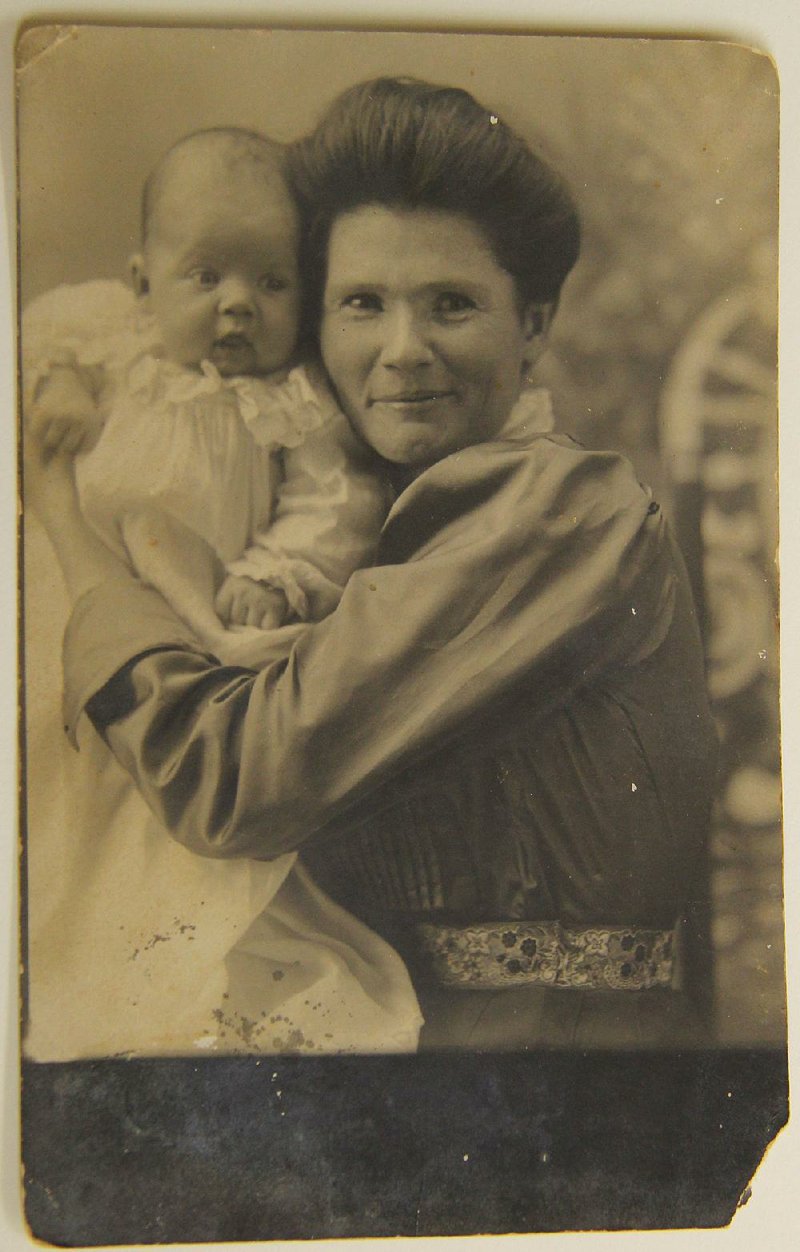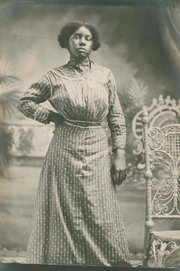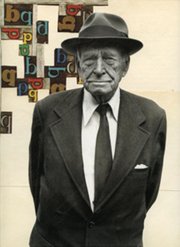In the 1960s, Hugo and Gayne Preller would have been called hippies or flower children; in the '50s, they might have been tagged as beatniks.
But they began their married life in 1892 before there was a name for what they did. Piloting a floating photography studio, they produced an alluring array of images that documented lives of people along the Mississippi and White rivers. The couple visited towns along the rivers for weeks at a time before moving on.
The German-born Hugo, son and grandson of painters, worked at repairing watches and guns and went hunting for wild game to feed the family. Kentucky-born Gayne, one of the first female commercial photographers in the South, ran the studio.
They produced more than 2,000 photographs and, like Depression-era photographer Mike Disfarmer of Heber Springs, the Prellers labored in relative obscurity and remained unknown for decades after their deaths.
The Prellers' radiantly beautiful images hang at Historic Arkansas Museum's exhibition "Hugo and Gayne Preller's House of Light," thanks to the work being rescued by Bentonville photographer Chris Engholm, known for his photos of the White River. Engholm made contact in 2013 with the Prellers' granddaughter, Gayne Preller Schmidt, in the Woodruff County town of Augusta; she had boxes of her grandparents' photos.
Lucky for us all, the exhibit hangs through October; you're likely to want to see it more than once.
The Prellers' wanderlust came to an end in 1910 when they settled in Augusta on the White River. They ordered a house, made from doors, from the Sears, Roebuck catalog.
So what makes the Prellers' photographs so compelling?
Their humanity. Emotion. Warmth. Character.
In Gayne's studio work, subjects appear relaxed as they stand or sit in front of a painted backdrop. Gayne was outgoing and friendly, likely drawing out the qualities seen in these photos. The studio had skylights, which allowed her to use natural light to great effect.
Some of Gayne's images have an almost modern quality. In one, a young woman strikes a pose, almost model-like, with her hands behind her. Her wavy hairstyle suggests the 1920s. In another, a couple sit, each with an arm around the other, radiating romance and intimacy.
Blacks make up a significant number of images in the Prellers' body of work. Among the best: A woman in a long dress, hand on her hip, stands next to a chair. Her presence is one of strength and dignity. The same could be said for a seated black man in a three-piece suit, cigar in hand.
A display of round pins with Gayne's photos of blacks draws the viewer closer. The photo brooches, or memorial pins, are fascinating. Some are fading, but there are many stories there we'll never know. Which is true of most of the Preller photographs: There is little information about who was photographed or when. That doesn't diminish their appeal. It deepens the mystery and stimulates the imagination.
There are a number of Preller family photos, including a Tom Sawyer-esque picture of the overalls-clad Preller sons holding bullfrogs they'd gigged. One of the best is a luminous photo taken by Hugo of a glowing Gayne holding a baby.
Hugo Preller, as his father and grandfather did before him, also painted. The exhibit has one canvas and several of his meticulously detailed mussel shell paintings, including a portrait of Gayne.
A short film near the end (or beginning or middle, depending where you come into the exhibit) is a fine introduction. The exhibit's one weakness is that it has too many entry points. But that's a very small gripe when you consider what's on the walls and in the display cases.
"Hugo and Gayne Preller's House of Light," through October. Historic Arkansas Museum, 200 E. Third St., Little Rock. Hours: 9 a.m.-5 p.m. Monday-Saturday and 1-5 p.m. Sunday. Admission: $2.50, ages 65 and over $1.50, children 17 and under $1. (501) 324-9351.
...
The Prellers' show underscores what a great spring it has been for lovers of photography.
Delta Award-winning photographer Kat Wilson offered a new vision in her show "Layers" at the University of Arkansas-Fort Smith, which closed April 29.
The Arkansas Arts Center exposed viewers to two excellent shows: the wondrous "Dorothea Lange's America," which closes today, and the strikingly colorful "Nathalia Edenmont: Force of Nature," which closed May 1.
The Arkansas Arts Center, East Ninth and Commerce streets, Little Rock, is open 11 a.m.-5 p.m. today. Info: (501) 372-4000.
Other shows:
• "Through the Camera's Eye: The Allison Collection of World War II Photographs," a continuing exhibit at the MacArthur Museum of Arkansas Military History, 503 E. Ninth St., Little Rock. Hours: 9 a.m.-4 p.m. Monday-Saturday, 1-4 p.m. Sunday. (501) 376-4602.
• "Visual Anthropology: Welcome to Our Neighborhood," Blue Eyed Knocker Photo Club, through Saturday at William F. Laman Library, Argenta Branch, 420 Main St., North Little Rock. Hours: 10 a.m.-6 p.m. Monday-Friday. (501) 687-1061.
• "The Open Road: Photography and the American Road Trip," through May 30. Crystal Bridges Museum of American Art, 600 Museum Way, Bentonville. Hours: 11 a.m.-6 p.m. Monday, Saturday-Sunday; 11 a.m.-9 p.m. Wednesday-Friday. crystalbridges.org or (479) 418-5700.
A 'SUCCINCT' SHOW
Michael Church's thoughtful collages often focus on social issues. Earlier this year, his work was displayed at V.L. Cox's moving and powerful exhibition, "A Murder of Crows," at New Deal Studios and Gallery in Little Rock.
The Conway-born Church's new exhibit, "Succinct," has opened at the Thea Foundation in North Little Rock. It hangs through May 31.
The show's title, he says, comes from a fairly minimalist approach to collage.
"I don't use a lot of layers in my work, mostly two or three images -- at most, five," he says. "I look for images that elicit emotion. I try to give people space to think. I used to think I was just lazy and didn't want to fill up the page. Amy Edgington told me that I said what I needed to say and I should ... just go my own route.
"Amy said she sometimes worried that she had too much in her works, that it would take people time to unpack it all."
Church, 52, says his friendships with Edgington, who died Nov. 19, and Cox have been "inspiring." Edgington's inspiration continues thanks to the contents of several boxes.
"Amy's partner, Lynn Frost, brought me several boxes of images Amy had cut out," he says. "She was very meticulous about how she labeled her boxes. I aspire to be that organized."
He and Cox will have another joint exhibition this fall at Gallery 26.
How did Church get the idea he was lazy? When he's not creating art or working at the Laman Library's Argenta Branch in North Little Rock, he is taking classes in graphic design and art at Pulaski Technical College.
"I want to expand myself digitally," he says.
Lazy? To put it succinctly, no.
"Succinct," the art of Michael Church, through May 31, Thea Foundation, 401 Main St., North Little Rock. Hours: 9 a.m.-5 p.m. Monday-Friday. (501) 379-9512.
Email:
ewidner@arkansasonline.com
Style on 05/08/2016


